MobileVillage (MV) and Appcelerator (APP) bring you a quick read of the latest biggest mobile apps news and other mobile tech news stories. In this mobile news roundup: Jurassic World AR, 3D mapping AR, Amazon buys Ring, Trump blocks Broadcom, Android P preview, Facebook Messenger Lite video calls, WhatsApp Pay, iPhone X hack, Google Light Fields VR, high resolution VR, Toshiba heads up display, ThinkPad X1 Carbon review and more.
Jurassic World AR game puts dinosaurs on your street
Universal Studios and Canadian gaming company Ludia have teamed up to develop a new Jurassic World AR (augmented reality) game. Similar to Niantic’s Pokémon GO, Jurassic World Alive will let players explore their environments to discover massive dinosaurs, deploy an in-game drone to collect DNA samples, and collect their eggs. But unlike in Pokémon GO, the Jurassic World AR game will let you battle other players using the beasts you capture.
Niantic is also working on the much-hyped Harry Potter: Wizards Unite game, as well as its Ghostbusters World AR game, both also coming this year. Look for Niantic’s Jurassic World AR game for iOS and Android this spring, just before the June 22 release of the film Jurassic World: Fallen Kingdom. You can watch a promo trailer here and pre-register for Jurassic World Alive now to get an in-game dinosaur egg incubator when the game launches. — MV
Blue Vision’s 3D mapping AR attracts new funding
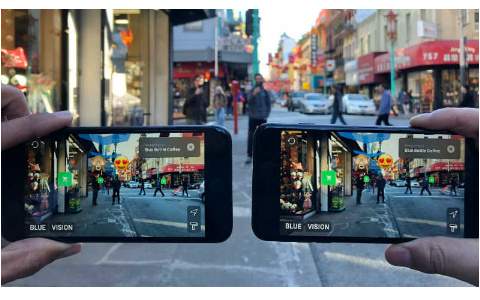 Blue Vision Labs, a London start-up which has developed 3D mapping AR technology that allows many people to share the same AR experiences at the same time, has raised US $14.5 million in a funding round led by GV, formerly Google Ventures. Formed in 2011 at Oxford University, Blue Vision Labs now provides cloud-based, self-updating 3D maps of entire cities that can be shared by many people. The city 3D mapping AR could be used in tourism, marketing, gaming to self-driving car navigation, to name a few applications. Blue Vision will use the funding for further development and hiring. — MV
Blue Vision Labs, a London start-up which has developed 3D mapping AR technology that allows many people to share the same AR experiences at the same time, has raised US $14.5 million in a funding round led by GV, formerly Google Ventures. Formed in 2011 at Oxford University, Blue Vision Labs now provides cloud-based, self-updating 3D maps of entire cities that can be shared by many people. The city 3D mapping AR could be used in tourism, marketing, gaming to self-driving car navigation, to name a few applications. Blue Vision will use the funding for further development and hiring. — MV
Put a Ring on it: Amazon buys Ring for $1 billion
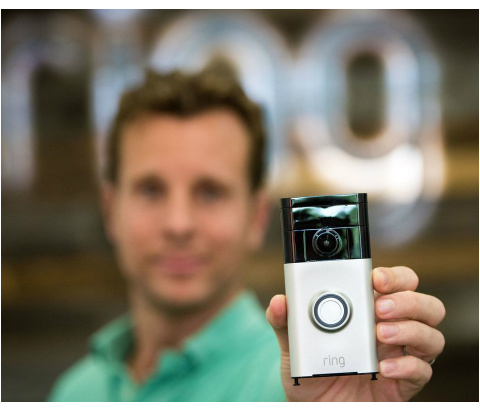 Amazon.com has agreed to buy connected-doorbell startup Ring Inc. for about $1 billion, according to according to insider sources. Ring makes video doorbells and security cameras that let users see and speak to anyone on their property from anywhere, via their computer or smartphone app.
Amazon.com has agreed to buy connected-doorbell startup Ring Inc. for about $1 billion, according to according to insider sources. Ring makes video doorbells and security cameras that let users see and speak to anyone on their property from anywhere, via their computer or smartphone app.
Amazon’s Ring buy is its second largest after its $13.7 billion acquisition of Whole Foods last year, and will help Amazon grow its smart package delivery service. Last year, Amazon introduced Amazon Key, a smart lock service that can open a customer’s door for verified delivery drivers to deposit packages directly inside a customer’s home.
It was only five years ago that Ring’s founder, serial entrepreneur Jamie Siminoff, was rejected on the TV show “Shark Tank”, but now Ring’s smart doorbells are being used by 2 million customers. And with Amazon buying Ring, those “Shark Tank” investors are no doubt gnashing their shark teeth. — MV
Trump blocks recordbreaking Qualcomm takeover
Donald Trump has signed an order blocking Broadcom from pursuing its $117 billion hostile takeover of US-based Qualcomm, which would have been the biggest ever tech acquisition in history. Trump acted on advice by the US Committee on Foreign Investment (CFIUS), which concluded that the deal would pose a threat to US national security. That conclusion is based in part on Singapore-based Broadcom’s ties with Chinese partners, and in part on suspicions that other Chinese companies such as Huawei could spy on US interests.
Although this is Trump’s first such executive order, the CFIUS has already squashed a number of other investments in US companies since Trump took office. Most of those bids were from Chinese companies. — MV
Magic Leap funding leaps to 2.3 billion — with no products
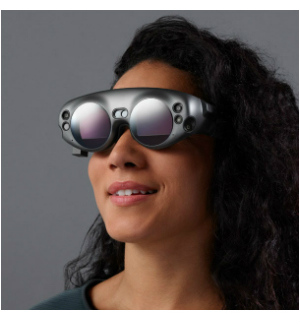 The much-hyped augmented reality (AR) startup Magic Leap has now raised $2.3 billion in funding, despite not having released any products since its founding in 2011. The latest investment is $461 million from the Saudi Arabia investment group The Public Investment Fund, and follows a $502 million Series D funding round last October led by Temasek.
The much-hyped augmented reality (AR) startup Magic Leap has now raised $2.3 billion in funding, despite not having released any products since its founding in 2011. The latest investment is $461 million from the Saudi Arabia investment group The Public Investment Fund, and follows a $502 million Series D funding round last October led by Temasek.
Magic Leap is promising its Magic One AR headset for release later this year (last fall’s prototype pictured here) but the headset is recently rumored to have problems recharging when in use. The company is also creating its own display technologies and own operating system. — MV
.
Android P preview released for developers
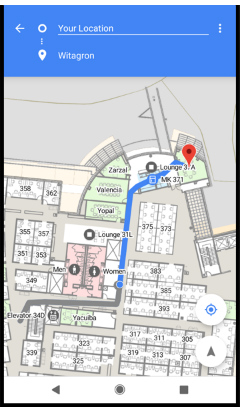 It was not too long ago that Google officially released Android Oreo, but the company is already pushing out the first developer preview its next mobile OS. App makers can now download this new version dubbed Android P (for now, at least) and start digging into all the under-the-hood updates. The most talked about of those upgrades includes built-in support for notches, which are those cutouts on the top of the iPhone X display for Apple’s FaceID Tech.
It was not too long ago that Google officially released Android Oreo, but the company is already pushing out the first developer preview its next mobile OS. App makers can now download this new version dubbed Android P (for now, at least) and start digging into all the under-the-hood updates. The most talked about of those upgrades includes built-in support for notches, which are those cutouts on the top of the iPhone X display for Apple’s FaceID Tech.
With Android P preview, a new API will identify devices with a notch and then adjust the screen accordingly. Other updates include more changes to notifications, additions to autofill framework, a new multi-camera API, security upgrades, performance improvements, and support for Wi-Fi RTT (Round-Trip-Time), which allows apps to get indoor positioning data down to a meter by measuring between indoor Wi-Fi access points (see example image).
Google’s Android P preview is now available for developers to download, but only on Google’s Pixel lineup of smartphones. — APP, MV
Facebook Messenger Lite video calls come to Android users
Facebook continues to make moves to bring modern features to older devices with slow internet connections. The latest rollout is Facebook Messenger Lite video calls for Android users. At under 10MB (a fifth the size of full Messenger), Messenger Lite is a great option for anyone looking to save storage space. However, it’s also an important play for Facebook to deliver modern features to emerging mobile markets with more rudimentary devices and less powerful internet connections. The Messenger Lite video calls feature is now live in more than 100 countries. There is no information on whether the feature will come to iOS. — APP, MV
WhatsApp Pay mobile payments set to shake up India
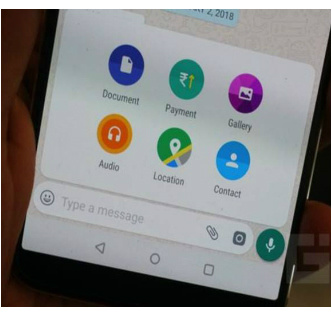 WhatsApp is hoping to better monetize its more than 200 million users in India. The Facebook division is piloting its WhatsApp Pay mobile payments service that lets users transfer money to each other via their bank. WhatsApp Pay works with India’s Unified Payments Interface, created by the multi-bank organization National Payments Corp. India (NPCI). But other mobile payments players like Google Tez, Paytm and e-ecommerce giant Flipkart’s PhonePe unit are upset that NPCI approved WhatsApp Pay without stricter security requirements and links to other digital wallets.
WhatsApp is hoping to better monetize its more than 200 million users in India. The Facebook division is piloting its WhatsApp Pay mobile payments service that lets users transfer money to each other via their bank. WhatsApp Pay works with India’s Unified Payments Interface, created by the multi-bank organization National Payments Corp. India (NPCI). But other mobile payments players like Google Tez, Paytm and e-ecommerce giant Flipkart’s PhonePe unit are upset that NPCI approved WhatsApp Pay without stricter security requirements and links to other digital wallets.
WhatsApp India users already spend much more time in the app than even on Facebook, and the app has a daily active usage that’s about 20 times higher than Paytm, according to Forrester Research. India may see a full rollout of the WhatsApp Pay mobile payments service as early as April, though the company hasn’t announced a timeline. — MV
Another security company touts iPhone X hack — iPhone 8 too
Two companies now say they know how to break into an iPhone X. Following news last week of an Israeli firm unlocking iPhones using iOS 11.2.6, a small company called Grayshift claims it can now hack the iPhone X and iPhone 8. As you’d expect, Grayshift is selling a security tool called GrayKey, which starts at US $15,000.
The latest iPhone X hack claims come on the heels of a new report that explains that mobile hacks will soon overtake computer hacks. With so much information about where you go, what you do, who you talk to and what you said—not to mention photos, fingerprints and passwords—security researchers say that malicious attacks are on the rise. — APP, MV
Google Light Fields VR app shows off newest VR tech
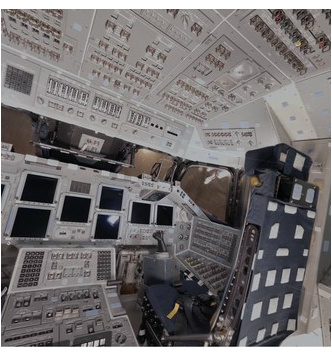 Google has a new demo VR app called “Welcome to Light Fields” that features realistic virtual reality scenes created from light field photography algorithms. The Google Light Fields VR app is so far limited to a few locations: the flight deck of the Space Shuttle Discovery, the Mosaic Tile House in Los Angeles, and the historic Gamble House in nearby Pasadena.
Google has a new demo VR app called “Welcome to Light Fields” that features realistic virtual reality scenes created from light field photography algorithms. The Google Light Fields VR app is so far limited to a few locations: the flight deck of the Space Shuttle Discovery, the Mosaic Tile House in Los Angeles, and the historic Gamble House in nearby Pasadena.
Unlike Lytro’s US $125,000 light field cinema camera, Google’s light field photography setup is more low-tech. The company re-crafted a circular rig developed with GoPro a few years ago, bending it into a 16-camera vertical arc that spins 360 degrees.
You can download the Google Light Fields VR app on Steam VR now for HTC Vive, Oculus Rift, and Windows Mixed Reality headsets. — MV
Google high resolution VR display to be unveiled May 22
Google will unveil details about its new high resolution VR display at this year’s Society for Information Display (SID) conference May 22. The company has been working on a high resolution VR OLED panel with ten times the pixel depth of current headsets since last year’s SID. Google’s presentation at SID is titled “18 Mpixel 4.3-in. 1443-ppi 120-Hz OLED Display for Wide-Field-of-View High-Acuity Head-Mounted Displays”.
A 1443 ppi (pixels per inch) display would mean high resolution VR of about 5500 × 3000, says OLED-Info. If that’s true, the Google VR display will blow away even the highest resolution displays in the latest Samsung Odyssey or the upcoming HTC Vive Pro, each with dual 1440 × 1600 resolution, 3.5 inch AMOLED displays at 90Hz. But smoothly rendering VR images in such a high resolution VR display is also a big challenge, which Google is also tackling. — MV
Toshiba dynaEdge heads up display targets enterprises
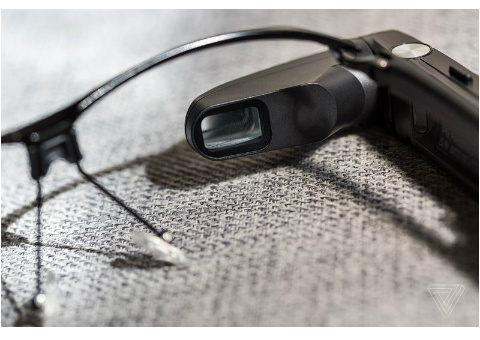 Toshiba’s new dynaEdge AR Smart Glasses are a bit of a misnomer, because it isn’t not so much augmented reality as a heads up display that you can mount on either side of your safety glasses/goggles or a hardhat. The dynaEdge heads up display has a speaker, microphone, camera, and swipe and tap functions. When paired with a Toshiba dynaEdge mini PC via USB-C, the headset lets workers view documents and PDFs, record and send photos, and even launch remote video chats directly from the heads up display. Tosbhia’s dynaEdge AR Smart Glasses are now available for US $1,899. Check out The Verge for a hands-on demo and video. — MV
Toshiba’s new dynaEdge AR Smart Glasses are a bit of a misnomer, because it isn’t not so much augmented reality as a heads up display that you can mount on either side of your safety glasses/goggles or a hardhat. The dynaEdge heads up display has a speaker, microphone, camera, and swipe and tap functions. When paired with a Toshiba dynaEdge mini PC via USB-C, the headset lets workers view documents and PDFs, record and send photos, and even launch remote video chats directly from the heads up display. Tosbhia’s dynaEdge AR Smart Glasses are now available for US $1,899. Check out The Verge for a hands-on demo and video. — MV
ThinkPad X1 Carbon review: Still a top business laptop
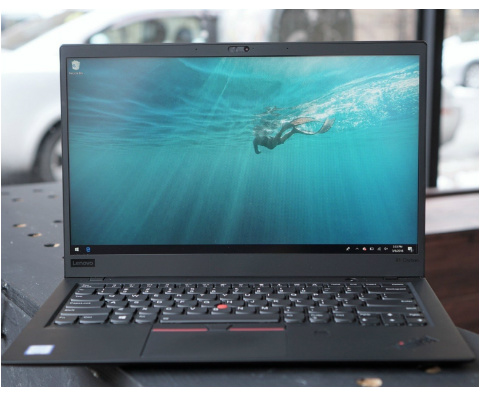 If you’re looking for a high-end business laptop, Engadget in its Lenovo ThinkPad X1 Carbon review calls the 14-inch ultraportable on par with Dell’s XPS 13 and Apple’s MacBook Air. The ThinkPad X1 Carbon (starting at $1,519 with 8th-gen Intel Core i5) keyboard can’t be detached turned into a tablet like Lenovo’s X1 Yoga can, but Engadget says it’s one of the best keyboards you can find.
If you’re looking for a high-end business laptop, Engadget in its Lenovo ThinkPad X1 Carbon review calls the 14-inch ultraportable on par with Dell’s XPS 13 and Apple’s MacBook Air. The ThinkPad X1 Carbon (starting at $1,519 with 8th-gen Intel Core i5) keyboard can’t be detached turned into a tablet like Lenovo’s X1 Yoga can, but Engadget says it’s one of the best keyboards you can find.
The higher-res, 1440p HDR display is not included unless you spend another $180, so if you’re on a budget you might consider Dell’s XPS 13, which starts at $900. You can see the full ThinkPad X1 Carbon review over on Engadget. — MV
.
This mobile news roundup is by MobileVillage Editor Gary Thayer and Erin Bailey of Appcelerator, a top mobile development platform company. Want your news featured in ‘Mobile Week’? Please check out our guidelines. We give preference to mobile news about trends, innovations, major app updates, big players and official Mobile Star Awards Entrants.
This week’s mobile news tags: Jurassic World AR, 3D mapping AR, Amazon buys Ring, Trump blocks Broadcom, Magic Leap funding, Android P preview, Facebook Messenger Lite video calls, WhatsApp Pay, iPhone X hack, Google Light Fields VR, high resolution VR, Jurassic World AR, Toshiba heads up display, ThinkPad X1 Carbon review





